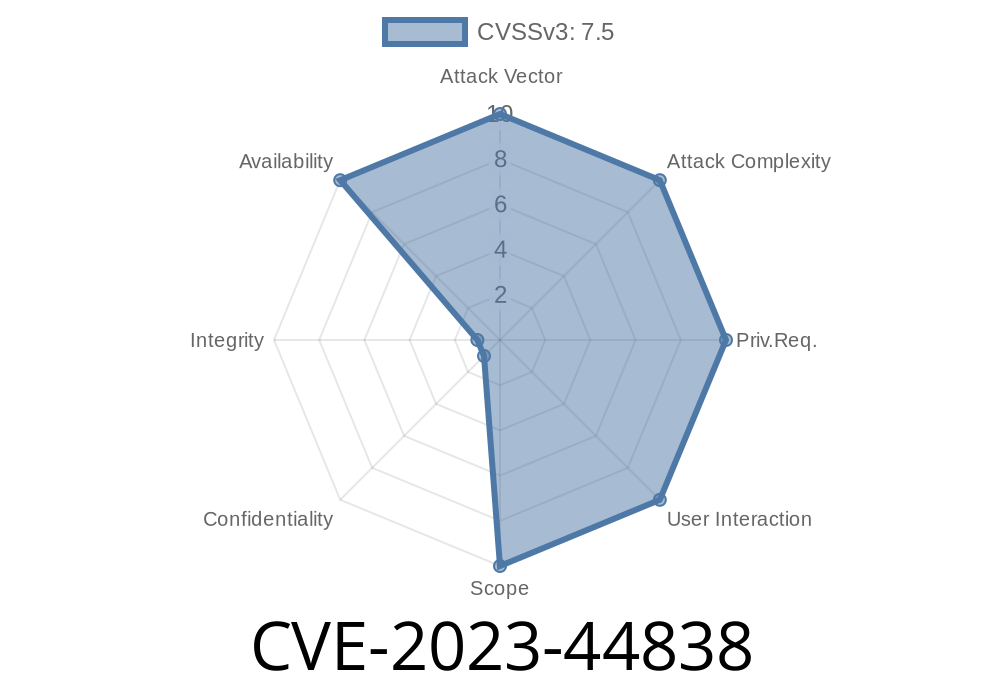D-Link, a renowned networking hardware manufacturing corporation, recently had one of its devices, the DIR-823G with firmware version A1V1..2B05, discovered to have a crucial security vulnerability. This flaw involves a buffer overflow in the TXPower parameter within the SetWLanRadioSettings function, leading to a potential Denial of Service (DoS) attack. This long-read post aims to provide a comprehensive breakdown of the vulnerability, its exploitation, code snippets, and necessary references for those interested in understanding or securing their D-Link devices against this issue.
What is CVE-2023-44838?
The Common Vulnerabilities and Exposures (CVE) system assigns unique identifiers to publicly disclosed security vulnerabilities. In this case, the identifier CVE-2023-44838 refers to a specific vulnerability affecting the D-Link DIR-823G A1V1..2B05 device. This buffer overflow vulnerability allows attackers to cause a Denial of Service (DoS) in the affected devices via crafted input deliberately designed to exploit this weakness.
How the Vulnerability Works
In the affected D-Link DIR-823G devices, the SetWLanRadioSettings function contains a TXPower parameter that sets the transmitting power of the wireless radio. This function, however, does not properly validate and sanitize the inputs, causing a buffer overflow. Attackers could exploit this vulnerability by submitting a maliciously crafted input, causing the device to crash and deny users access to its services.
Here is an example of pseudocode representing the vulnerable SetWLanRadioSettings function
function SetWLanRadioSettings(TXPower)
{
int buffer[256];
strcpy(buffer, TXPower);
// Rest of the function logic
}
Exploiting the Vulnerability
To exploit this security vulnerability, one could send a crafted input to the SetWLanRadioSettings function, passing an exceptionally large data into the TXPower parameter. Here is an example of such a malicious request:
POST /submit.cgi HTTP/1.1
Host: 192.168..1
Content-Type: application/x-www-form-urlencoded
Content-Length: 123
submit_flag=wl_setting&TxPower=AAA....(overlong string)....AAA
This request can trigger the buffer overflow, potentially crashing the targeted device and causing a Denial of Service situation.
Protecting Against the Vulnerability
The best course of action to protect users from potential exploitation is for D-Link to release a firmware update that addresses this vulnerability by adequately validating and sanitizing the input for the TXPower parameter in the SetWLanRadioSettings function. Users should always ensure their devices are up-to-date with the latest firmware to secure their systems against known vulnerabilities.
For more information on this vulnerability, check out the original references
1. CVE-2023-44838 Official Entry
2. D-Link Security Advisory
In conclusion, CVE-2023-44838 represents a significant security risk for D-Link DIR-823G A1V1..2B05 device users due to its potential to be exploited in Denial of Service attacks. D-Link should promptly address this vulnerability, and users should maintain up-to-date firmware on their devices to stay protected against known security issues.
Timeline
Published on: 10/05/2023 16:15:12 UTC
Last modified on: 10/06/2023 15:18:30 UTC
